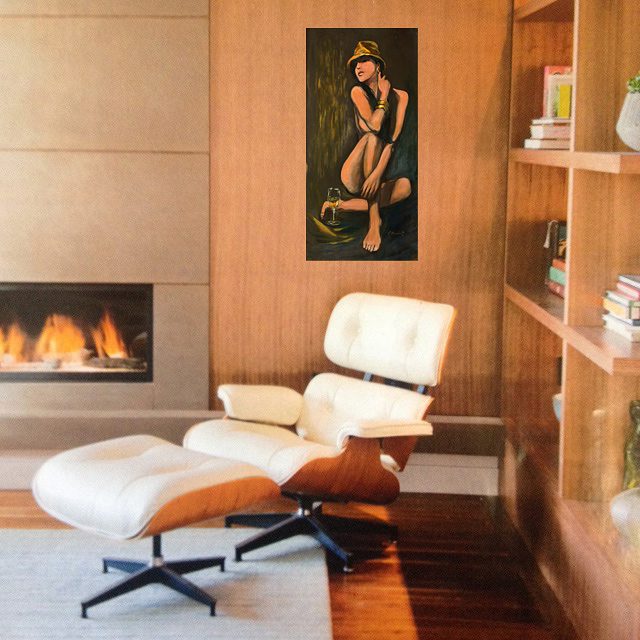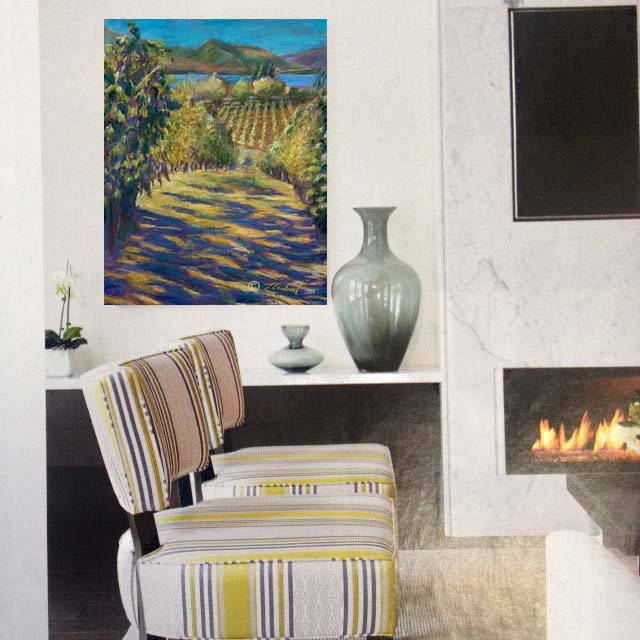Art Decorating

Home décor begins with art
Reprint from Okanagan Homes,
By Dorothy Bortherton,
Compare bare walls with walls that feature carefully chosen and correctly hung art, and you realize that art can bring your home to life.
But where do you start? How do you bet beyond family photos? How do you draw the line between class and clutter?
Okanagan artist, Louise Lambert offers a few suggestions. She operates Wine Country Studios on Mission Hill in West Kelowna, and specializes in painting vineyard landscape in classical styles.
“Often a decorator will take colours from a piece of art to do upholstery or paint. Art will outlast a sofa and even hardwood flooring,” said Lambert.
Starting with the art makes sense because usually the artist has an eye for colour that work together, and a good piece of art can be used as a motif for decorating.
Lambert noted you may want to choose art for the emotions it creates for your home decor. A painting may make you feel peaceful soulful or active. The whole room can be designed around that feeling. “You want to get art you love. Try not to get what everyone else is getting but something with individuality.”
Placement of art may make the difference between an awkward visual grouping that grates on your nerves or a pleasing arrangement that goes with the flow of the room.

“Eye level is the right level
That of course, depends on if you’ll generally be standing or sitting in the room where you hang the art. In a hallway, you’ll want to hang it at standing eye level, about 5.5 foot point.
In a dining or living room, hang the art at your eye level when seated. “You don’t want to have to crane your neck to view the art”. Choose your art in relation to wall size-smaller works for narrow walls and larger works for expansive spaces. It’s okay to stack pieces, and in any grouping, three or five looks better than two or four.
Don’t crowd the art. Keep a minimum of six inches of clear wall space around a single piece of art. A foot is even better.
Consider furniture size and pair art with the right sized furniture piece. In general, Lambert says, art hanging over a piece of furniture should not be longer than the length of the furniture.
Large pieces go well over sofas, fireplaces. Keep the art about two-thirds to three-quarters the length of the furniture. The bottom of the frame should sit only four to eight inches above the tabletop.

A frequent mistake we make is hanging art too high. Err on the side of hanging it lower, if you are in doubt.
When you are creating groupings of art pieces, Lambert says to remember, “The eye is always looking for a horizon or straight line.”
Keep the outside edges of a grouping as straight as possible, not offset as if you are going upstairs, unless you actually are moving up steps. In that case climbing art works.
“If you don’t have an intuitive sense of balance, cut out papers the size of your pictures, place them on the floor and try different arrangements, than use the papers on the wall,” advises Louise Lambert.
People generally place their best art in living and dining rooms, and then tackle personal spaces. When considering lighting think tract, directional pot incandescent and halogen. Don’t use fluorescent light on art, because it generally is too harsh.
Framing can give an art piece your own touch of individuality. “It’s not bad to mix and match frames, but they should blend,” noted Lambert. For instance, shiny metal frames may not blend with handsome wood frames, but several types of wood may blend. Beware of being too “mathchy-matchy,” warned Lambert.
